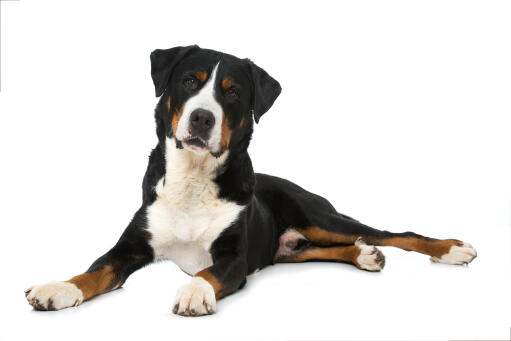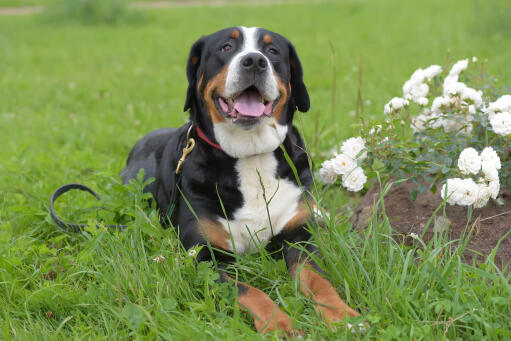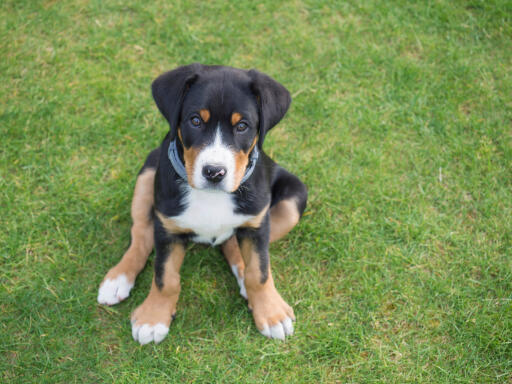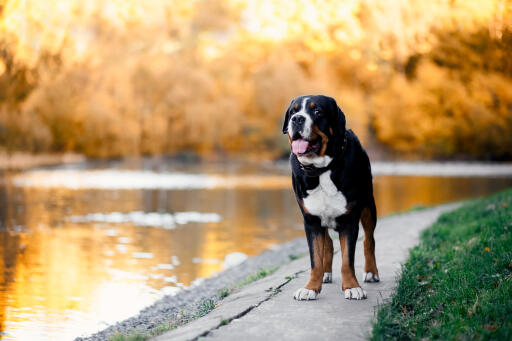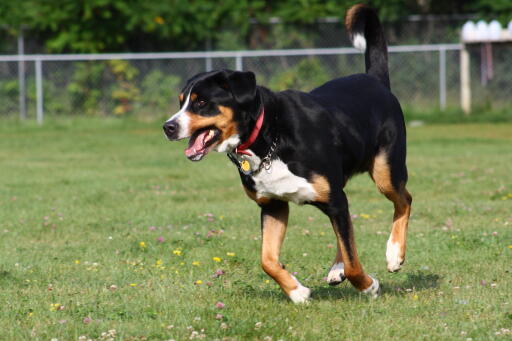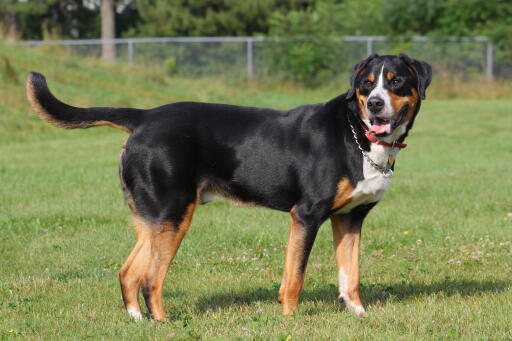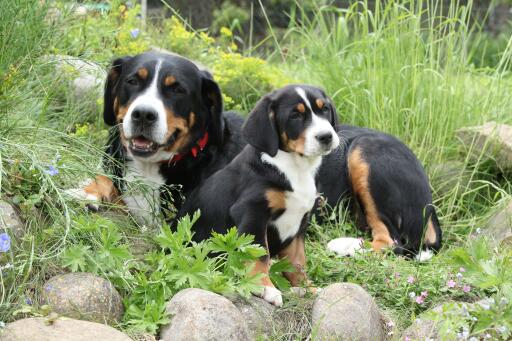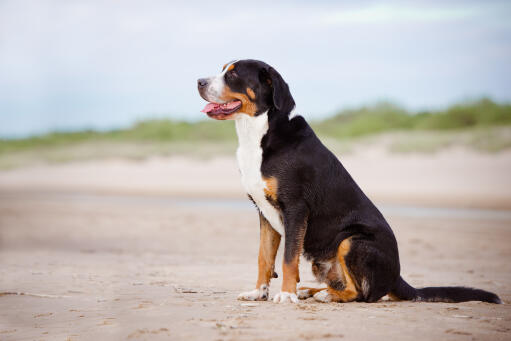Greater Swiss Mountain Dog








History
The exact origin of this breed is unknown, though it is most likely a descendent of the Roman Mastiffs that arrived in the area some 2000 years ago. These new arrivals most likely bred with the local farm dogs to eventually produce the breed we know today. They are the largest of the 4 types of Swiss Mountain Dog. They were originally used to pull carts, guard farms from animals and thieves, herd sheep and cattle and also as companions. They were given the nick-name “The Poor Man’s Horse” due to their impressive pulling ability. By the early 1900’s the breed was dangerously close to dying out due to machinery and other breeds doing the work that they were once used for. Luckily, in 1908, Dr Albert Heim took an interest in the breed and since then their numbers have been steadily growing.
Behaviour
The Greater Swiss Mountain Dog is large and can be rather intimidating at first sight. Despite this they are a loyal and affectionate dog and will be devoted to its family. They can be overprotective of their home if not properly socialized, but will be accepting of strangers once they enter the house and prove not to be a threat. They love to be around children and will be happy to play with them. They also get along well with other dogs and household pets and rarely show much aggression when out of the home. This being said, they will protect their home and loved ones if need be.
The Greater Swiss Mountain Dog needs a fair amount of exercise, but nothing too demanding. They enjoy being outdoors and around their family. A few short walks over the course of the day will be enough to satisfy their needs. A gentle trot with a few outbursts of energy will be enough to get this dog tired. At home they’ll usually nap away the day, but always will be ready for another walk or some quality family time. They do have a fair amount of stamina as they were bred as working dogs, but they will be satiated with whatever you give them. Just make sure to go out with them at least once a day to avoid restlessness at home. Many do well in carting/pulling competitions, they can be trained to carry and pull stuff. For example when going out on a family picnic they can be used to carry the backpack, this stimulates their mind and fulfills a natural instinct. Adding a small weight to a harness and letting them pull it around for a bit is also a good idea. The dogs enjoy this and it helps keep their bodies fit and mind active.
Training with these dogs needs to begin early on in order for them to reach their full-potential. As with all large dogs, the first step is teaching them who’s boss. If this isn’t made clear from day one they may try to assume the role themselves. They aren’t necessarily difficult dogs, they can just be a bit stubborn at times and a bit slow to learn. It all varies from dog to dog however, as some are easy to train and will learn new things very quickly. They do take a long time to fully mature, both physically and mentally, so consistent training will be in order. They may act like puppies for quite a long time and will want to mess around even if they have reached full size. A gentle and loving approach to training is best for these dogs, as they can react badly to harshness. Getting them to work will help with training, this can be stimulated by asking them to carry things in their mouths or games of fetch. They can also, of course, be used for real work on farms.
A regular brush will keep the coat in good condition and remove dead hairs.
Health Problems
These dogs suffer very few ailments for such a large breed, although Canine Hip Dysplasia and Gastric Torsion are possibilities.
Breed Details
- Status: Common
- Life Expectancy: 10 - 12 years
- Weight: 130 - 137 pounds
- Height: 23.5 - 28.5"
- Rare: No

